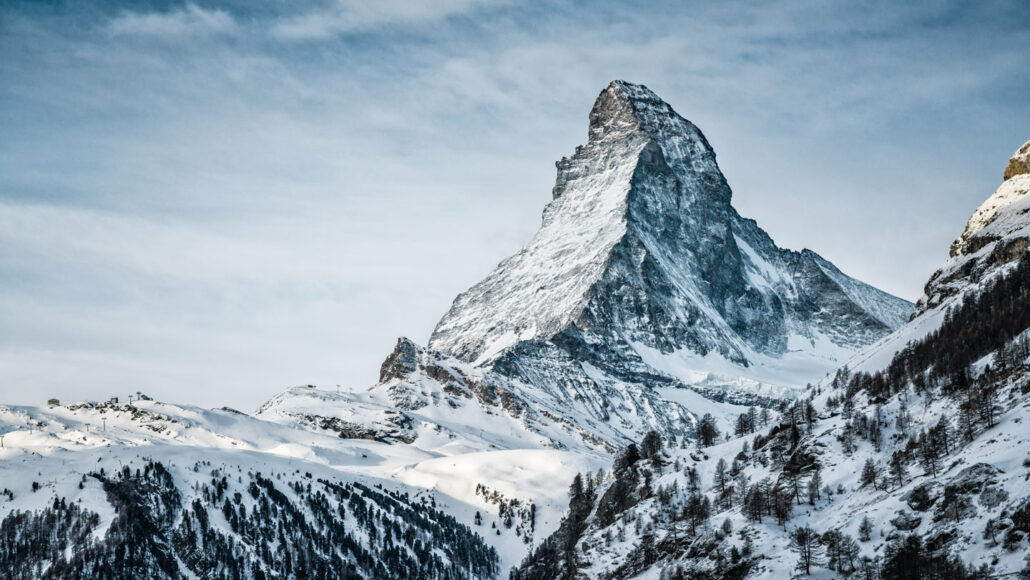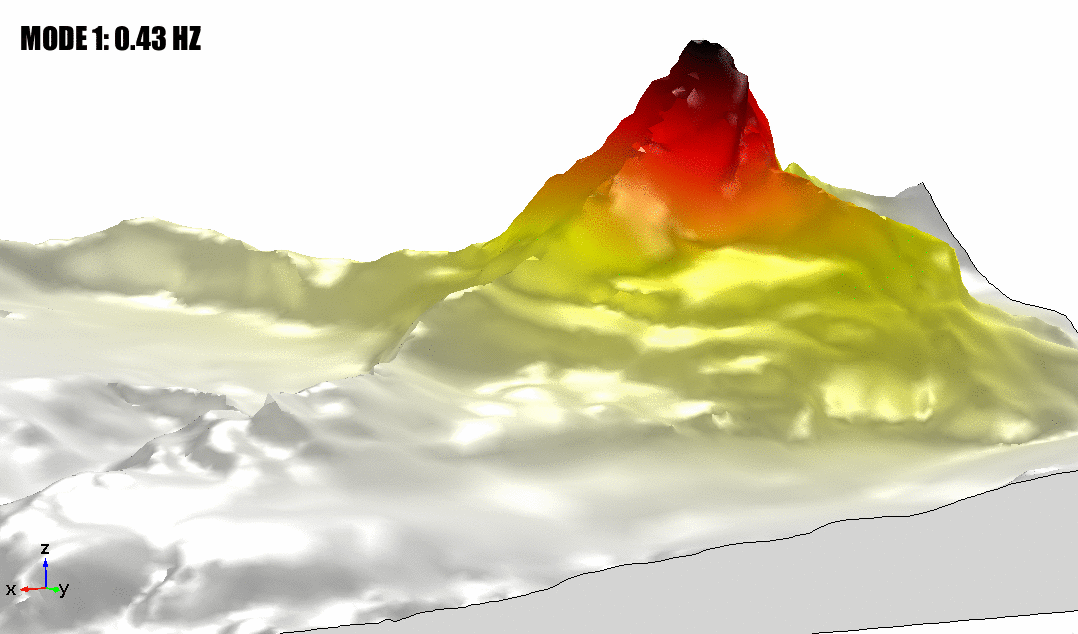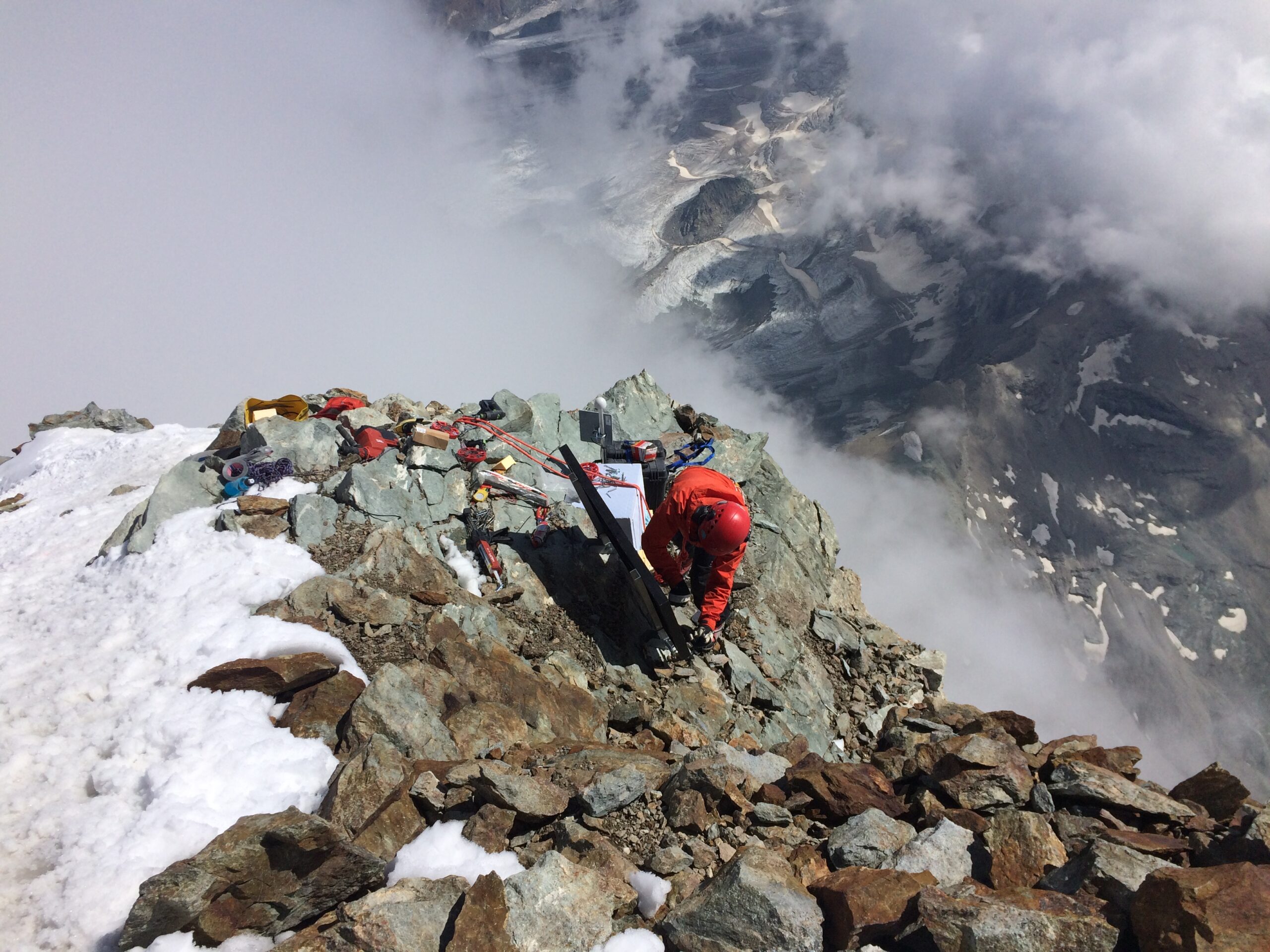The Alps’ Matterhorn shows how much even big mountains sway
Such data can help planners map high-risk zones for peaks, bridges or any large structures

Switzerland’s iconic Matterhorn peak, here, was the site of monitoring to assess how much this mass of rock is continuously moving.
mbbirdy/E+/Getty Images Plus
By Peg Lopata
With its dramatic pyramid-like shape, the Matterhorn is said to be the most photographed peak in the Swiss Alps. Its steep slopes also make it notoriously hard to climb. What’s not visible to photographers or climbers is another important trait of this mountain: It is always subtly swaying. New data show that it shimmies in all directions.
Those motions will vary by site and triggering conditions. The Matterhorn’s sway continues day in and day out. Indeed, the study found “no measurable seasonal variations” due to such things as temperature changes or snow and ice accumulation.
That it moves was not a surprise, says Bob Anderson. He’s a geologist at the University of Colorado Boulder. “Amazingly,” he says, “Earth — practically anywhere we measure it — is in motion.”
Yet the study did unearth new things. The top of the Matterhorn sways more than its base — 14 times more. At the peak’s summit, each sway lasts roughly two and half seconds.

Gauging how much mountains — or any massive structures — move was the goal here, says Jeff Moore. He’s a geoscientist at the University of Utah. That’s in Salt Lake City. “We really wanted to bring this mountain alive for people,” he says, showing how it’s “constantly quivering.”
Those motions are a response to what’s happening in and around it.
“Earth is constantly humming with seismic energy,” Moore explains. These seismic waves are “created by near and far-off earthquakes.” A bigger surprise, Moore says, was finding that the Matterhorn is kind of in tune with the world’s oceans. “It’s really a strange connection,” he says, “and one that we didn’t anticipate.”
Big ocean waves produce strong seismic energy, he says. As those waves meet and cross, they set up “a kind of pumping on the seafloor that’s measured all over the world, all the time” — including at the Matterhorn. He says this means there’s a vibrational connection between the world’s oceans and this mountain.
Recognizing the movements of such huge structures is not just a curiosity. Knowing the typical sway — and how it might vary under different triggers — could help nearby communities understand their risk of landslides.
Moore was part of an international team that shared these new findings in the January 2022 Earth and Planetary Science Letters

Taking the Matterhorn’s pulse
One could think of a mountain as a bell that vibrates in response to triggering movements. And mountains are not alone. All hard structures — including office buildings, statues and cars — can vibrate like bells. (Perhaps you’ve felt the subtle motion as your home shudders and windows rattle when a big truck rumbles down the street.) Many things can set hard structures shaking. Most obvious are explosions or earthquakes. But truck and train traffic can, too.
In most cases, the swaying of mountains is so subtle that only super sensitive devices can detect it. Called seismometers, three such devices were installed to measure the Matterhorn’s shimmying. Team member Samuel Weber placed one at the mountain’s peak. That was 4,478 meters (14,692 feet) above sea level. A second went at the base. Another was placed in between those two, on a ridge. Weber works at the federal Institute for Snow and Avalanche Research in Davos Dorf, Switzerland.

Typically, the new data show, the mountain top may sway only tiny amounts, “like micrometers, or even nanometers,” says Moore. “But if an earthquake passes through, it will move millimeters — and more if it’s a big earthquake.”
Knowing how much more the mountain can move under various conditions will help improve maps identifying landslides and other seismic hazards. Anderson, at Colorado, says, “I can imagine that this kind of information would help us address how likely it is that a landslide occurs at different parts of different mountains.”
Moore says his team focused on the Matterhorn “because it’s so well-known and culturally prominent.” But they also made similar measurements at another Swiss peak, Grosse Mythen. Its shape is similar to the Matterhorn’s.
This far smaller mountain vibrates at a frequency around four times higher than the Matterhorn’s. Smaller objects generally vibrate at higher frequencies, Moore notes. These mountain sways, he says, are likely “representative of a phenomenon happening to some degree at all mountains.”
Such data may offer lessons for buildings and other structures, notes Kris Pankow. She’s a seismologist at the University of Utah who did not take part in the new study. For instance, they might be useful in deciding what type of buildings to construct where, both at mountainous sites and at sea level.







